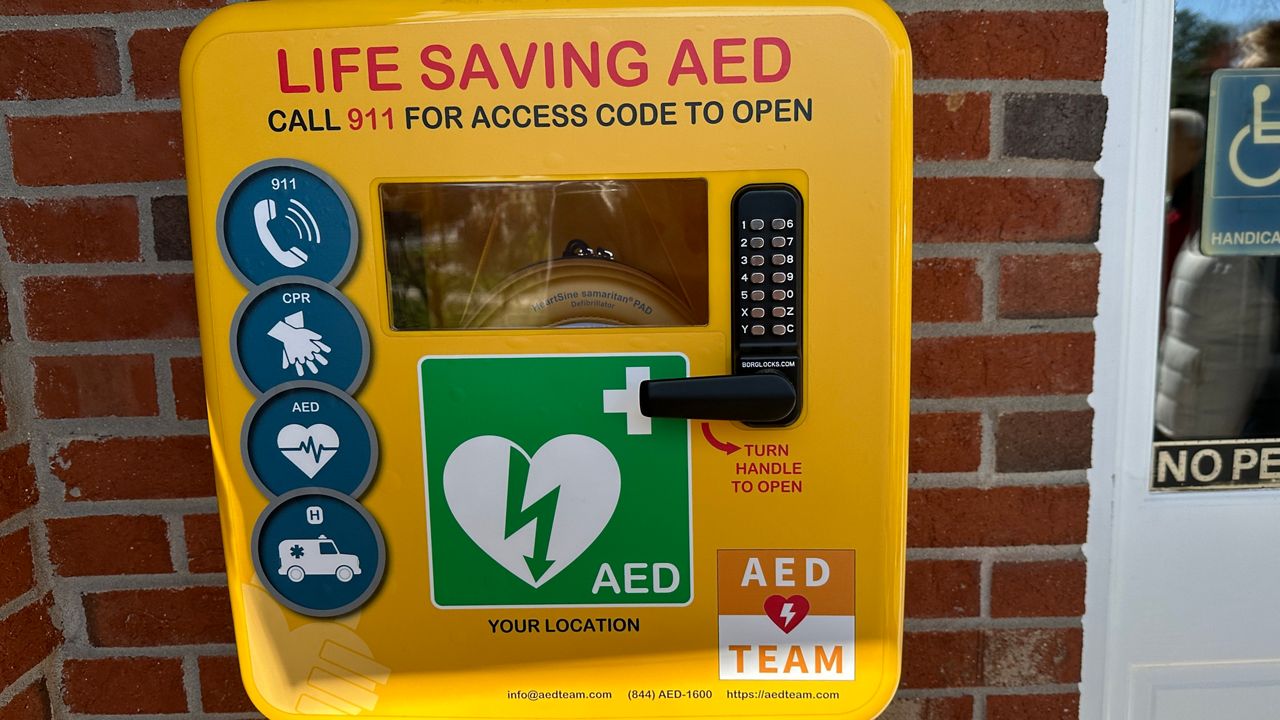COLUMBUS, Ohio — The Ohio Department of Health (ODH) has released a Model Emergency Action Plan for Automated External Defibrillators (AEDs) that can be utilized by schools and municipal sports and recreation facilities, according to a state press release.
“Every second counts when someone suffers a sudden cardiac arrest. It’s the number one killer of student-athletes in America,” Gov. Mike DeWine said in the release. “But we also know that the vast majority who get immediate help from an AED survive. Earlier this year, I was proud to sign a bill to expand access to these life-saving devices in schools and sports venues across Ohio. The creation of this model emergency action plan is the next step in safeguarding our children.”
That bill was House Bill 47, which mandates the presence of AEDs in all public and chartered nonpublic schools and municipal sports and recreation facilities (unless the town has fewer than 5,000 people).
The law also required these places to adopt an action plan, ensure people are trained in using AEDs and that these groups have informational meetings during the sports season on “the symptoms and warning signs of sudden cardiac arrest for young athletes of all ages.”
That law became effective Thursday, Oct. 24.
“I urge all Ohio schools and sports and recreation locations to adopt this model emergency action plan – or one like it – right away, and practice, practice, practice,” DeWine said in the release. “AEDs save lives. But they only work if people know how to use them and are confident enough to spring into action in the first sign of an emergency.”
The release cites the Centers for Disease Control and Prevention in noting that more than 356,000 cardiac arrests happen outside of hospitals every year, with 70-90% dying before they get to one.
It also cites the American Heart Association as reporting that nine of 10 people who suffer a cardiac arrest live if being treated with an AED within a minute.
“The use of an AED is simple, but powerful, and by equipping people with the knowledge and confidence to take quick action, we are empowering Ohioans to make a real difference when an emergency arises,” Lt. Gov. Jon Husted said in the release. “This model emergency action plan provides a helpful blueprint to get people trained and ready for an emergency.”
The release states that the ODH plan, developed with assistance from medical experts, requires quarterly practice.
“We are pleased to be able to offer this resource to Ohio schools and youth sports organizations,” ODH Director Dr. Bruce Vanderhoff, said in the release. “We hope it will support life-saving first response for someone suffering from sudden cardiac arrest in their facilities.”



